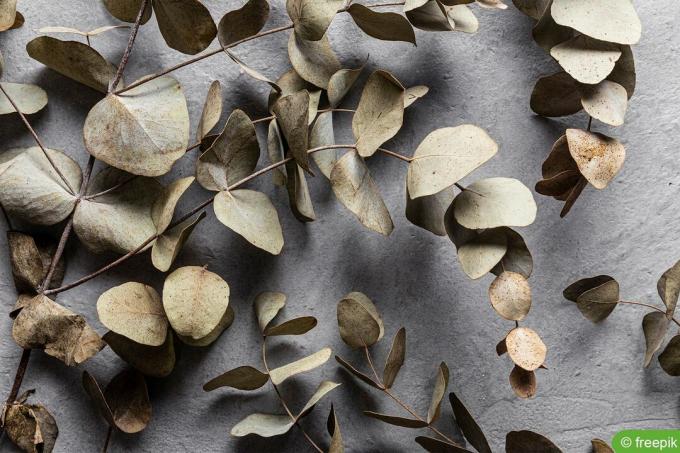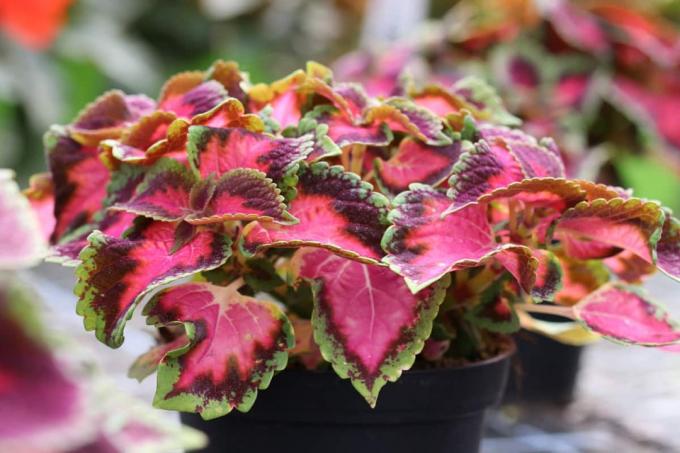

Table of contents
- Useful use of jute felt and fleece
- The inner winter protection and relocation for certain plants
- Winter protection is more than just frost protection
- Avoid winter pests
- The right tools and materials for the job
- Worth knowing about winter protection fleece shortly
If you want to protect garden plants from frost and ice, fleece mats are a reliable solution. Not only that: fleece and jute felt are not only ideal for the coming winter as frost protection, but also for the summer, as sun protection.
Useful use of jute felt and fleece
The two materials are available online and at any hardware store at affordable prices and can be used for more than just covering various sensitive plants, because excess material can be used to beautify flower pots become. This is a wonderful way to give away your own flowers or shrubs, wrapped around the flower pot with fleece or felt. The material is easy to cut, malleable, permeable to moisture and light and has breathable properties, which is particularly good for the plants. UV and weather resistant, the felt or fleece is 100% biodegradable, which is also worth mentioning in this context.
The fleece or jute felt goods offered as mats in the trade are for laying out the garden floor to protect the roots from excessive solar radiation or from frost. Flowerpot can be wrapped with these materials to protect the entire tub from frost - and placing the tubs on fleece mats also protects the plants. Roses, shrubs and trees that are sensitive to the weather are given a fleece hat or hood. While this looks fun, it protects the plants immensely.
In the colors beige to dark green and with differentiated decors, the fleece hoods blend in wonderfully with their surroundings and the various versions, which are even available with a zip, are the ideal winter protection for plants in everyone Size. Tree trunks wrapped with jute felt, e.g. B. are protected with little effort and the fun, colorful decors of the different versions let your garden shine brightly even in winter.
The inner winter protection and relocation for certain plants
The plants can not only be protected externally with fleece or jute felt, the internal winter protection, which is just as important, begins in midsummer. Incorrect fertilization measures can make your plants, trees and shrubs less winter-resistant. So should after the 15th July of each year no more nitrogen fertilizers are used because too late fertilization with Nitrogen impairs wood maturity and thus makes the shoots of plants and trees more susceptible to frost damage. Young perennials, shoots and shrubs are grateful for external winter protection in the first few years. Nevertheless, there are plants for which the winter protection from inside and outside is not enough. such as B. the geranium, which is a perennial plant but not hardy:
- In late autumn you should cut off all the shoots of the plant, cut back half of the entire plant and burst out the flowers.
- After that, the geranium should hibernate cool, around 5°C and light.
- Dahlia and gladioli bulbs should be dug out of the ground and left to dry a little.
- Then they should hibernate in a frost-free place, preferably in a basement, while keeping them moist.
Mediterranean plants such as B. Oleander, most types of palm trees, exotic woods or bougainvillea should be kept frost-free inside the house over the winter.
Winter protection is more than just frost protection
Evergreen plants also need a lot of light and water in winter, so the location of the plants must be chosen well and, if necessary, watered in winter as well. All other shrubs and trees are best kept in the shade as frost protection, because the slightest solar radiation leaves them The upper shoots are frost-free, so water can evaporate above them and the frost in the soil does not allow the roots to absorb new water can. There is therefore a risk of drying out even in winter. Proper protection for plants of all kinds in winter not only protects against frost, but also protects against drying out.
Avoid winter pests

If you have plants in the winter quarters in the basement or in the attic, you should check them for pests from time to time. The most common winter pests are spider mites, aphids, and any type of scale insect that likes to be on the underside of leaves and on the stems. Early detection simplifies the removal of the pests. Mechanical removal, plucking, is only possible in the early stages. If the infestation is already advanced, you can resort to commercially available products or use a mixture of water, denatured alcohol and soft soap. So that a plant is not infested in the first place, the location must be chosen well and individually, because the infestation is often in the wrong location.
The right tools and materials for the job
For proper winter protection you will need materials and tools as follows:
- Jute felt or fleece for trimming for potted or tub plants
- Burlap sacks or mats for shrubs, for covering and for tree trunks
- Peat, bark mulch or fir brushwood to cover larger areas
- stable floral wire to attach the jute mats
- Garden fork for poking out the plant tubers
- garden gloves
- Secateurs for pruning plants and shrubs, possibly Hedge shears or pruning shears
- Rake for the leaves
- flower trowel or planting shovel
- Spade and rake for tillage
- Spray bottle for pest control
Worth knowing about winter protection fleece shortly
Autumn after autumn, the hobby gardener is faced with the question of how the plants in the home garden are safest can be protected against the wintry climate so that you can enjoy it again in the coming year flourishing shrubs, Flower and living green.
A very good protection in the expected cold temperatures (and in case of excessive solar radiation) for the saplings and pot plants offer protective covers made of fleece or jute felt. Also when used in flower boxes and beds, they are becoming increasingly popular. Your advantages:
- They are easy to use (ie. H. they are quite easy to cut and shape, for example).
- They are perfectly insulating and also made of a pleasantly soft and light material.
- The light and moisture permeable nature as well as the breathable properties also speak for themselves.
- Another important point in this context is that they are 100% biodegradable and UV and weather resistant.
A little tip - to come back to the versatility of jute felt: It is not only becoming more and more common Also used as a mulch mat, but jute felt is a great material when it comes to decorating in the home or in the conservatory goes. In addition, gifts can be wrapped or presented in a visually appealing way. Decorate flower pots.
Floor and garden fleece and jute felt are available from various online shops and in specialist shops on site or in the hardware store available at very affordable prices - so a good and useful thing in every sense!
 garden editorial
garden editorial I write about everything that interests me in my garden.
Learn more about overwintering plants

Eucalyptus dries up during the winter: what to do?
Eucalyptus in tubs spends the winter best in a frost-protected place in the house. It is not uncommon for the beautiful eucalyptus plants to dry up during the winter. We show what you can do about it.

Is bamboo hardy? Hibernate bamboo correctly
A bamboo can undoubtedly enrich any garden. But can it survive winter temperatures in good health? There is no general answer. It depends on the species and what winter protection it gets.

Is the colored nettle hardy? 6 tips for wintering
Summer is the season when the colors of these ornamental foliage plants are at their most intense. Most of the leaves are multicolored, with different drawings, wavy or heavily slit edges.

Is Camellia japonica hardy? Overwinter camellia properly
Anyone who sees a blooming camellia for the first time will definitely be amazed. The attractive plant, which came to Central Europe from Japan and Korea, has taken the hearts of hobby gardeners by storm. It is usually cultivated in tubs. Is she hardy?

Is the magic flower hardy? | Overwinter Mirabilis jalapa
The Japanese miracle flower (Mirabilis jalapa) delights its viewers with its bright and colorful flowers from June to October. It carries up to five different colored flowers on one and the same plant. Even a single flower can be multicolored.

Is rhododendron hardy? 6 tips for wintering
Overwintering rhododendrons: With these 6 tips you can get the azaleas through the winter safely!



